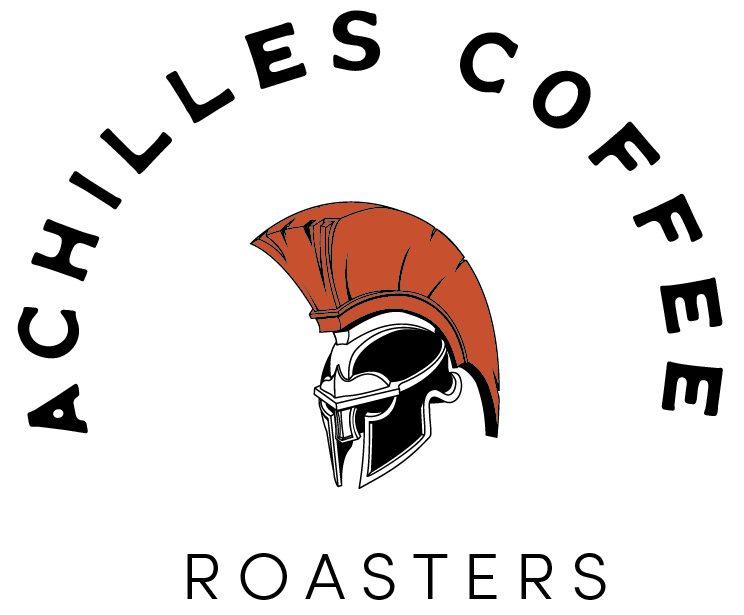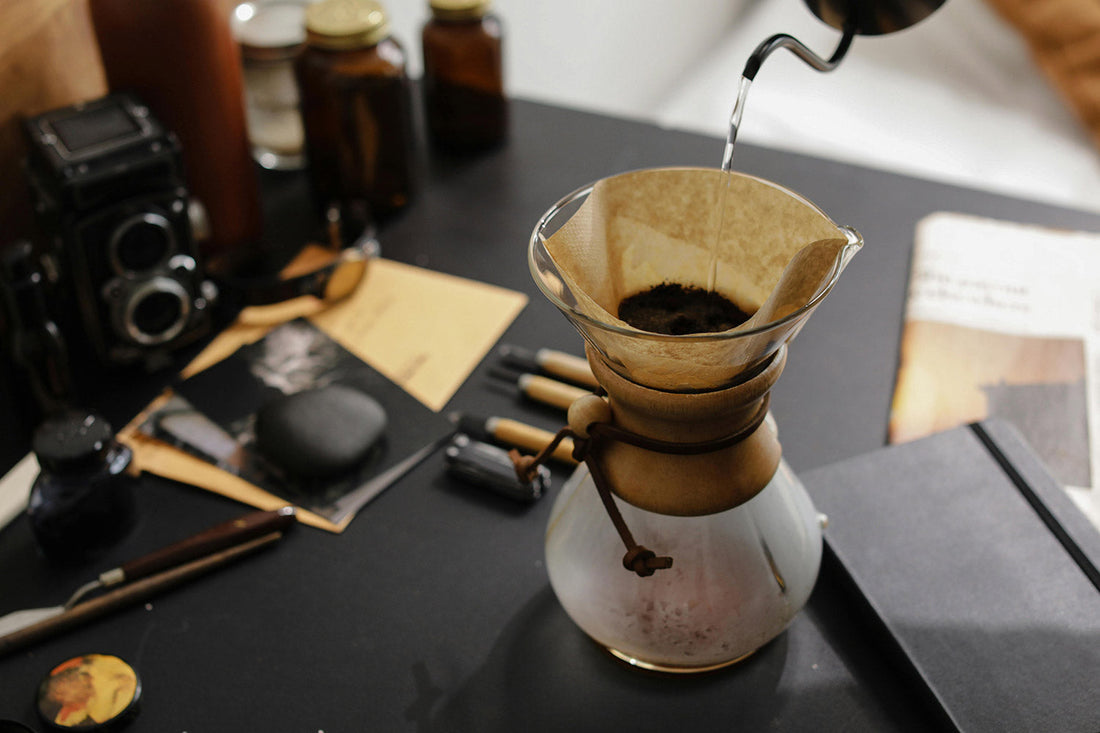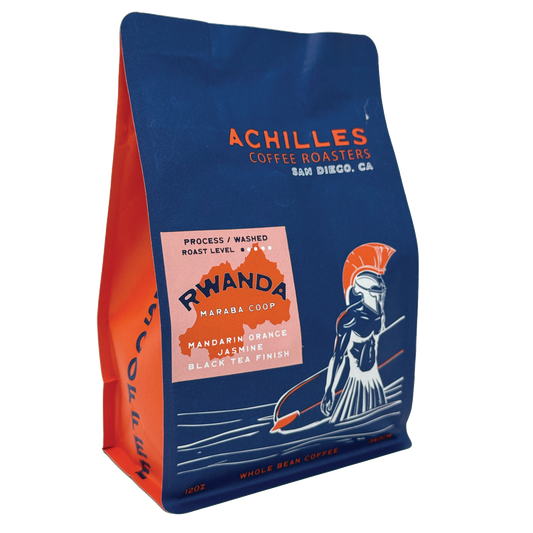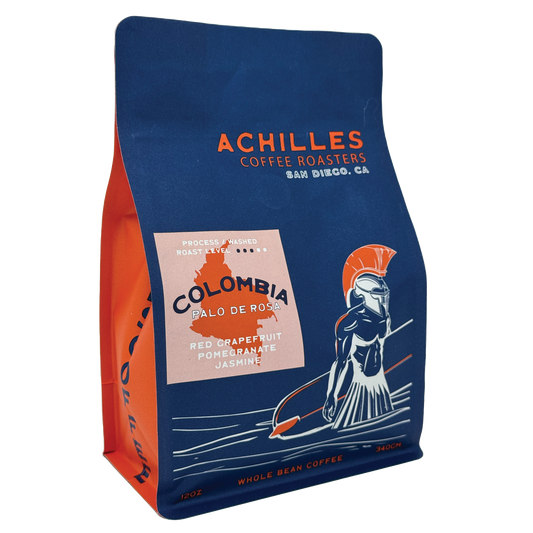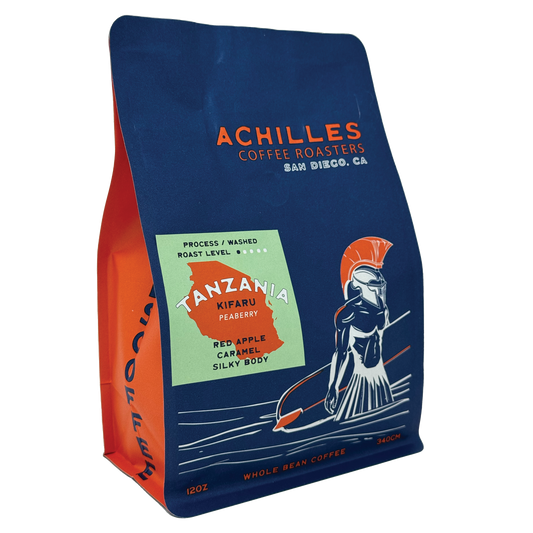If you’re chasing that perfect, clean, and nuanced cup of coffee at home, pour-over brewing is likely on your radar. But once you decide to go the manual brew route, you’re faced with a big choice: Which pour-over dripper is right for you?
In this deep-dive guide, we’ll compare three of the most popular pour-over brewers—Hario V60, Kalita Wave, and Chemex. We’ll break down how they work, their pros and cons, and how to get the best out of each.
Whether you’re a beginner or a seasoned home barista, this is your blueprint for pour-over mastery.
Why Pour-Over Brewing?
In a world filled with automatic coffee machines, single-serve pods, and quick fixes, pour-over brewing stands out as a method that celebrates craftsmanship, patience, and precision. It’s more than just a way to make coffee—it’s a hands-on experience that invites you to slow down and connect with the process. And the payoff? A clean, vibrant cup of coffee that reveals more of your beans’ character than almost any other brew method.
Let’s break down why pour-over has earned its reputation among home brewers and professionals alike.
Full Control Over Extraction Variables
One of the greatest advantages of pour-over brewing is the level of control it gives you. With just a few key variables—water temperature, flow rate, grind size, and brew ratio—you can dramatically shape the flavor and balance of your coffee.
-
Water temperature: You can fine-tune this to optimize extraction. Generally, a range between 195°F and 205°F works best for most coffees.
-
Flow rate: Unlike automated machines, you control how fast or slow you pour. A slower pour gives more contact time and can enhance body, while a faster pour speeds up the brew and highlights acidity.
-
Grind size: Depending on the brewer, adjusting your grind allows you to balance extraction and control strength, bitterness, or brightness.
-
Brew ratio: Whether you prefer a lighter brew or something more concentrated, you can dial in the exact amount of coffee and water you use.
This level of precision allows you to experiment with different beans, adjust based on roast level or origin, and make small changes that result in big shifts in taste. With pour-over, you're not just following a recipe—you’re learning how coffee extraction works, and developing your own preferences as a brewer.
Cleaner Cup with Bright, Layered Flavors
Pour-over methods typically use paper filters, which remove most of the oils and fine coffee particles that can muddy the flavor in immersion methods like French press. The result is a clean, crisp cup that highlights the unique tasting notes in your coffee—whether it's the fruity acidity of an Ethiopian natural or the chocolatey sweetness of a Guatemalan washed lot.
Because of this clarity, pour-over is often favored for single-origin coffees or lighter roasts, where subtle aromatics and flavor layers can really shine. With the right technique, pour-over allows you to bring out:
-
Floral and citrusy top notes
-
Balanced sweetness and fruitiness
-
Delicate body and lingering finish
For many, it’s the ideal way to explore coffee’s complexity.
A Mindful, Meditative Brewing Experience
Beyond flavor, pour-over brewing offers a different kind of reward: the experience itself. There’s something calming and satisfying about the ritual—heating your water, grinding your beans fresh, blooming the grounds, and pouring in a slow, steady spiral.
This isn’t rushed coffee. It’s a mindful routine that engages your senses, clears your mind, and becomes part of your daily rhythm. Whether you’re brewing for yourself in the quiet morning or preparing a cup for a guest, the intentional nature of pour-over makes the moment feel meaningful.
In a fast-paced world, it’s a small act of slowness—and that alone has value.
The Brewer You Choose Shapes the Cup
Each pour-over device brings its own subtle effect on flavor, body, and brewing style. That’s part of what makes pour-over so fun—it’s endlessly customizable. Whether you're using a Hario V60, Kalita Wave, or Chemex, the shape of the brewer, filter thickness, and flow rate will all affect your final cup.
-
Hario V60: Great for clean, bright, nuanced coffees with vibrant acidity—ideal if you enjoy experimentation and tweaking your technique.
-
Kalita Wave: Offers more forgiveness and a balanced profile with heavier body and smoother finish—perfect for consistency seekers.
-
Chemex: Produces a crisp, ultra-clean cup with low body and refined clarity—great for delicate, floral coffees.
No matter your choice, the common thread across all pour-over methods is manual control, craft, and flavor clarity.
When it comes to pour-over brewing, the device you choose plays a major role in shaping your cup. Each brewer has its own design quirks, ideal use cases, and flavor profile. Whether you're chasing brightness, body, or balance, this guide will help you choose the right one for your setup.
Hario V60
Design:
The Hario V60 is one of the most iconic pour-over brewers, known for its cone-shaped design with spiral ridges along the inner walls. It features a large single hole at the bottom, which allows for a fast and highly responsive flow rate. Available in a variety of materials—ceramic (for heat retention), glass (for aesthetics), metal (for durability), and plastic (for portability)—the V60 is both versatile and widely accessible.
Brew Style:
The V60 is a favorite among experienced brewers because it produces a bright, clean, and complex cup when used with precision. It excels at highlighting high-acid coffees and brings out delicate fruit and floral notes. However, because the flow rate is influenced by your pour technique and grind size, it’s sensitive to small changes, making it less forgiving than other brewers.
Pros:
-
Affordable and widely available
-
Lightweight plastic and metal versions are great for travel
-
Excellent clarity and high definition in flavor—ideal for single-origin beans
Cons:
-
Steeper learning curve—mistakes in grind size, bloom, or pouring can lead to inconsistent results
-
Performs best with a gooseneck kettle for precision pouring
Best for: Those who love experimenting and want full control over their brew. Ideal for light roast lovers and detail-oriented brewers.
Kalita Wave
Design:
The Kalita Wave is instantly recognizable for its flat-bottomed dripper and three small drainage holes, which encourage an even flow of water through the coffee bed. Its wave-shaped filters help maintain a flat bed of grounds and reduce direct contact with the dripper walls, promoting uniform extraction. Available in stainless steel, ceramic, and glass.
Brew Style:
The Wave is known for producing balanced, smooth coffee with moderate body and less pronounced acidity than the V60. It’s particularly forgiving, making it a great entry point for beginners or those who want consistency with minimal fuss. Though it offers slightly less clarity than the V60, it compensates with more even extractions and ease of use.
Pros:
-
Delivers reliable, repeatable results
-
Excellent for beginners or anyone who wants low-effort consistency
-
Less sensitive to pouring style and grind variation
Cons:
-
Wave filters are proprietary and not as widely available as V60 or Chemex filters
-
Smaller brew capacity—Kalita 155 model is best for single cups (~25–30g of coffee max)
Best for: Casual brewers, morning multitaskers, or anyone looking for a balanced, forgiving cup without sacrificing too much flavor nuance.
Chemex
Design:
The Chemex is as much a piece of art as it is a brewer. Its hourglass-shaped borosilicate glass body, complete with a wood or glass collar, makes it an elegant centerpiece. But its defining feature is the thick bonded paper filter, which is 20–30% thicker than standard pour-over filters and removes nearly all oils and fine particles.
Brew Style:
Chemex brews a cup that’s crisp, clean, and tea-like, emphasizing sweetness and clarity while muting heavier body or bitterness. Because of the thickness of the filter and the wide brewing area, it excels at highlighting bright, floral, and delicate flavor notes—but tends to produce less body than either the V60 or Kalita Wave.
Pros:
-
Stunning design doubles as a serving carafe
-
Ideal for brewing larger batches (6–8 cups) without sacrificing clarity
-
Thick filters produce ultra-clean cups with minimal sediment
Cons:
-
Slower drainage can lead to over-extraction if you don’t manage grind and pour rate carefully
-
Fragile (glass body requires careful handling)
-
Filters are expensive, proprietary, and not always easy to find
Best for: Entertaining guests, brewing larger volumes, or those who love an ultra-clean, refined cup with visual elegance.
Final Comparison at a Glance
|
Brewer |
Flavor Focus |
Ease of Use |
Brew Volume |
Best For |
|
V60 |
Bright, crisp, complex |
Moderate–Hard |
1–2 cups |
Flavor chasers, light roast fans |
|
Kalita |
Balanced, round, smooth |
Easy |
1–2 cups |
Beginners, daily brewers |
|
Chemex |
Clean, sweet, delicate |
Moderate |
3–8 cups |
Entertaining, design lovers |
No matter which brewer you choose, each offers a unique path to exploring the nuances of your coffee. And the best part? You can always try all three—and build a pour-over lineup that matches your mood, roast, or guest list.
Side-by-Side Flavor Comparison
|
Brewer |
Flavor Profile |
Body |
Clarity |
Ease of Use |
|
V60 |
Bright, complex, highlights acidity |
Light-medium |
Very high |
Intermediate/advanced |
|
Kalita Wave |
Balanced, smooth, sweet |
Medium |
High |
Beginner-friendly |
|
Chemex |
Sweet, delicate, clean |
Light |
Very high |
Intermediate |
How to Brew With Each Dripper
Each pour-over device—V60, Kalita Wave, and Chemex—has its own ideal brewing method, grind size, and pour style. While the basic principle of manual brewing remains the same, the design of each dripper affects flow rate, extraction time, and flavor clarity. Below is a complete quick-start guide to brewing excellent coffee with each of these beloved brewers.
V60 Quick Brew Guide
Grind: Medium-fine (like table salt)
A finer grind increases resistance and slows the flow rate—critical for the V60’s fast-draining cone and single-hole design. Aim for a grind similar to fine sand or table salt.
Coffee-to-Water Ratio: 1:16
A great starting point is 25g coffee to 400g water. Adjust ratio to taste once you get comfortable.
Pour Style: Spiral pours in multiple stages
Start with a bloom pour (~50g of water) to saturate the grounds and release CO₂. Wait 30–45 seconds. Then pour in slow, steady spirals from center outward, adding water in 2–3 more stages. Pour slowly to maintain an even water level and avoid channeling.
Brew Time: ~2:45–3:30 total
You’re aiming for a total extraction time under 4 minutes. If it finishes too quickly, try a finer grind; too slowly, go coarser.
Tips for Best Results:
-
Use a gooseneck kettle for precision and control.
-
Keep the water stream low and steady—don’t splash the sides.
-
Swirl or gently tap the brewer at the end to settle the bed evenly.
Flavor Profile: Bright, clean, highly expressive. Ideal for single origins.
Kalita Wave Quick Brew Guide
Grind: Medium (like beach sand)
Kalita’s flat bottom and 3-hole design slows the flow, so a slightly coarser grind than V60 works well. This promotes even extraction and a smooth cup.
Coffee-to-Water Ratio: 1:16
Stick with 25g coffee to 400g water for a balanced brew. The Wave performs consistently across a range of ratios.
Pour Style: Gentle center pours or slow spirals
Start with a 40–50g bloom, wait 30–45 seconds, then pour slowly in concentric circles or straight center pours. Maintain a consistent water level and avoid letting the coffee bed dry out.
Brew Time: ~3:00–3:30 total
This slightly longer brew time encourages balance and sweetness. Adjust grind and pouring pace as needed to stay in range.
Tips for Best Results:
-
Focus on even water dispersion. Pouring in a tight circle works well.
-
The flat bottom makes this dripper forgiving—great for beginners or multitaskers.
-
Avoid over-agitation; a gentle hand preserves clarity.
Flavor Profile: Balanced, round, and smooth with good sweetness. Very consistent.
Chemex Quick Brew Guide
Grind: Medium-coarse (like kosher salt)
Because of the thick paper filter and large brew volume, you need a coarser grind to ensure proper flow and prevent over-extraction.
Coffee-to-Water Ratio: 1:15 or 1:16
For a standard 6-cup Chemex, use 40g of coffee to 600g water. For lighter, more tea-like brews, use a 1:16 ratio; for slightly richer cups, try 1:15.
Pour Style: Even, slow circular pours
Begin with a 75–100g bloom and wait 45 seconds. Then pour slowly in wide spirals, keeping the water level about ½ inch above the grounds. Avoid pouring directly on the filter walls.
Brew Time: 4:00–5:00 total
Chemex is slower due to its thick filter. Adjust grind or pour speed to avoid exceeding 5 minutes, which can lead to bitterness.
Tips for Best Results:
-
Pre-wet the paper filter to eliminate papery flavors and warm the brewer. Discard rinse water before brewing.
-
Pour with patience—this is a gentle, meditative method.
-
Stirring or swirling halfway through can promote even extraction.
Flavor Profile: Ultra-clean, tea-like, and refined. Low in body but high in clarity—ideal for delicate or floral coffees.
Which Pour-Over Brewer Is Right for You?
Choosing the perfect pour-over brewer ultimately comes down to your personal tastes, brewing style, and how you like to enjoy coffee. Ask yourself these key questions to find the brewer that fits your needs and personality best:
Do you love bright, complex coffee and enjoy dialing in your technique?
If you appreciate vivid acidity, layered flavors, and want full control over every aspect of your brew, the Hario V60 is an excellent choice. It rewards attention to detail and experimentation, allowing you to manipulate grind size, pour rate, and extraction time to unlock nuanced profiles. However, be prepared for a bit of a learning curve, as small changes in technique can have a noticeable impact on your cup.
Are you looking for something more forgiving, consistent, and easy to use?
If you prefer a no-fuss brewing experience that still produces a delicious, well-balanced cup, the Kalita Wave is likely your best match. Its flat-bottom design and three small holes make it very forgiving of pouring inconsistencies and grind variations, delivering consistent results with less effort. It’s perfect for busy mornings, multitasking, or if you’re new to manual brewing but want great coffee every time.
Do you often brew for groups or want the cleanest, most elegant cup?
If you frequently make coffee for several people or enjoy brewing larger batches, the Chemex shines. Its larger capacity allows you to make multiple cups at once, while the thick bonded paper filters create an exceptionally clean, crisp cup with minimal sediment. The Chemex’s refined clarity highlights delicate floral and sweet notes, making it ideal for savoring specialty coffees with friends or family.
Are you passionate about design and aesthetics?
Beyond functionality, the Chemex is a true icon of coffee culture and modern design. With its elegant hourglass shape, wood collar, and timeless glass construction, it doubles as a beautiful centerpiece on your kitchen counter. If you value the look and feel of your brewing tools as much as the coffee itself, the Chemex brings style and sophistication to your daily ritual.
Equipment Essentials for All Pour-Overs
-
Gooseneck kettle (for flow control)
-
Freshly ground coffee (burr grinder!)
-
Scale (for precise ratio)
-
Fresh, filtered water (good water = better coffee!)
Common Mistakes & How to Avoid Them
Pouring too fast → uneven extraction
Using the wrong grind size → over- or under-extracted coffee
Skipping the bloom → trapped CO2 = sour cup
Not pre-wetting filters (especially Chemex) → papery taste
Master these details, and every pour-over can shine.
FAQs About Pour-Over Brewing
Can I use V60 filters in a Kalita Wave?
No, it’s not recommended. V60 and Kalita Wave filters differ in shape, size, and thickness, designed specifically to fit their respective brewers. The V60’s conical filters won’t properly fit the flat-bottomed Kalita Wave dripper, which uses wave-shaped filters that help maintain an even coffee bed and extraction. Using the wrong filter can cause uneven flow, clogging, or unwanted flavors. For the best results and consistent brews, always use the filters made specifically for your brewer.
Which pour-over brewer is best for travel?
For portability and durability on the go, the plastic versions of the Hario V60 or the Kalita Wave 155 are excellent choices. Both are lightweight, compact, and less prone to breaking compared to their glass or ceramic counterparts. The plastic V60 is especially popular among travelers and campers because it’s easy to pack and clean. The Kalita Wave 155 is small enough to fit in most travel bags and still brews a quality cup. Pair either with a compact hand grinder and a portable kettle, and you’ll have great coffee no matter where you are.
Does the Chemex require a special kettle?
While a gooseneck kettle is highly recommended for any pour-over brewing because it offers precise control over flow rate and pour placement, the Chemex does not strictly require one. You can brew successfully using a standard kettle by pouring slowly and steadily in circular motions, being careful not to pour directly on the filter walls to avoid channeling. However, investing in a gooseneck kettle can improve consistency and make the brewing process easier and more enjoyable, especially with larger volumes like those in the Chemex.
Conclusion: Your Perfect Pour-Over Awaits
Choosing the right pour-over brewer is a personal journey, shaped by your taste preferences, lifestyle, and brewing goals. Each of the leading options—the precise and dynamic Hario V60, the dependable and forgiving Kalita Wave, and the elegant, refined Chemex—offers its own distinctive way to unlock the full potential of your coffee beans.
The V60 invites you to embrace hands-on control, perfect for those who love to experiment and explore the nuances of flavor. The Kalita Wave delivers consistency and balance, making it ideal for everyday brewing without the stress. Meanwhile, the Chemex combines beauty and function, producing a clean, delicate cup that’s perfect for savoring moments of calm or impressing guests.
Yet, no matter which brewer you choose, the true secret to great coffee lies beyond the equipment: it’s about practice, patience, and quality ingredients. Fresh, well-roasted coffee, carefully measured water, and attention to detail during brewing all come together to create that perfect cup.
So don’t rush the process. Take time to refine your technique, experiment with grind sizes and pour rates, and discover what you enjoy most. Your perfect pour-over cup isn’t just about the brewer—it’s about the journey of learning, tasting, and savoring every step along the way.
With dedication and passion, the perfect pour-over coffee is always within reach. Happy brewing!
